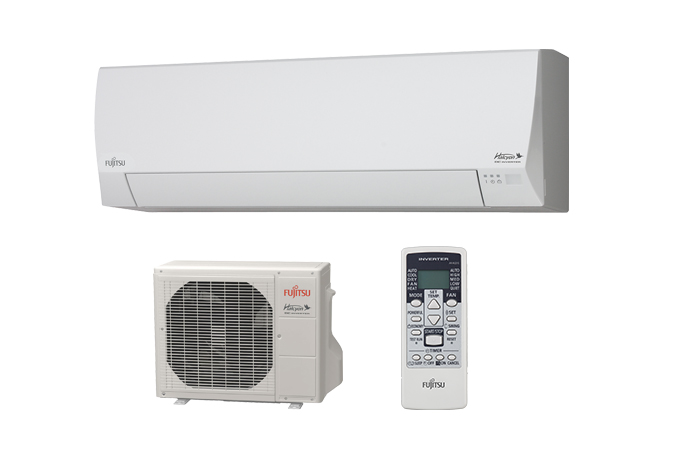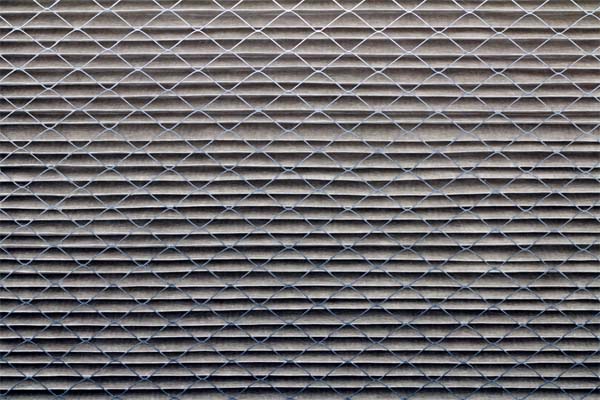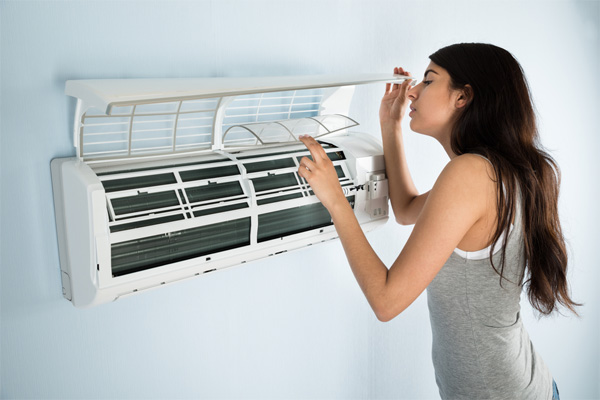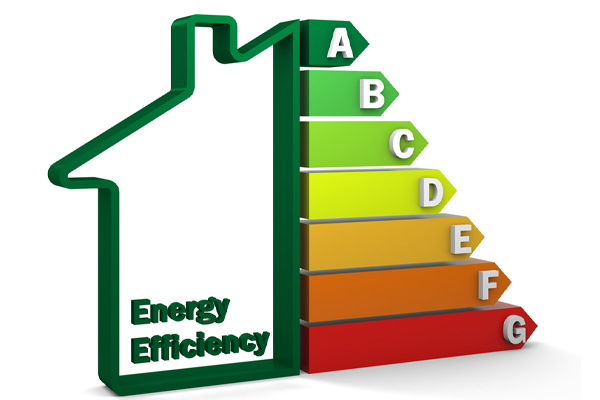Get Unbeatable Indoor Air Quality With A Ductless Mini-Split System
 With rising temperatures and the potential risks of pollution in many cities, indoor air quality has become a major concern. Many people tend to stay indoors, particularly in regions where work and recreation take place within a building or structure.
With rising temperatures and the potential risks of pollution in many cities, indoor air quality has become a major concern. Many people tend to stay indoors, particularly in regions where work and recreation take place within a building or structure.
While heating and cooling systems are available to keep living spaces comfortable, many people forget about the quality of indoor air that they inhale. It may come as a surprise to many, but indoor air may be more polluted and unsafe than the outdoor air in many homes and offices. However, many HVAC systems can help combat indoor air pollution. One such system, the ductless HVAC system, does just this.
What Is A Ductless Mini-Split System?
Contents
- 1 What Is A Ductless Mini-Split System?
- 1.1 Applications of a Ductless Mini-Split System
- 1.2 What Is Indoor Air Quality and Why Should You Be Concerned?
- 1.3 How HVAC Systems Can Improve Indoor Air Quality
- 1.4 How Ducted HVAC Systems Can Negatively Affect Your Indoor Air Quality
- 1.5 Why Ductless Systems Are The Best Solution For Healthy Indoor Air
- 1.6 Is a Ductless Mini-Split System Right for You?
- 1.7 Check Out One Of Our Ductless Installation Projects
- 1.8 Get In Touch With Townsend Energy To Find Out More About Ductless Mini-Splits
Ductless mini-split systems are similar to the more familiar central HVAC systems except that ductless systems do not use any ductwork. Instead, ductless systems have two major components that ensure proper and efficient heating and cooling in the home or office.
The two major components that make up a ductless system are the indoor unit and the outside unit. For air conditioning applications, for example, the indoor air handler sucks in warm air in a room and brings it to the evaporator coils. These evaporator coils are filled with a chemical solution called a refrigerant or coolant that helps absorb heat. It also serves to cool air, which is later released into the room. The warm air is then pushed to the outside component. There, the heat is released out and away from the home. This explains why air surrounding the outside components of ductless HVAC systems are warm.
In a regular HVAC system, ducts have to be installed to carry the air to a central location. There, the HVAC unit cools or heats the air before it is released into the interior through other ducts. Conditioned air has to travel through this system of ducts before it is released into a specific room or space. In a ductless system, the indoor unit is installed inside the home, which means that the need for ducts is eliminated. It is through this indoor unit that warm or cool air is distributed and released.
Applications of a Ductless Mini-Split System
 Ductless mini-splits have a wide range of applications in residential, commercial, and industrial structures. It is the HVAC system of choice for many homes, offices, and factories. Ductless mini-splits are quite flexible, able to heat or cool a single room, multiple rooms, and retrofitted additions. This type of HVAC system is also very effective for heating and cooling garages and enclosed patios.
Ductless mini-splits have a wide range of applications in residential, commercial, and industrial structures. It is the HVAC system of choice for many homes, offices, and factories. Ductless mini-splits are quite flexible, able to heat or cool a single room, multiple rooms, and retrofitted additions. This type of HVAC system is also very effective for heating and cooling garages and enclosed patios.
Ductless systems are also an excellent option for apartments and multi-family homes, particularly in structures where it is impossible to install distribution ductwork or extend existing ductwork. They are the preferred heating and cooling solution for many applications because they allow zoning. They offer homeowners a means to heat or cool individual rooms by setting different temperatures in each, based on the occupants’ needs and requirements. With ductless systems, for example, it is possible to set a higher temperature in bedrooms and keep a lower temperature in the kitchen. Adjusting the temperature is easy since individual air handlers are installed in different spaces.
Ductless mini-split heating and air conditioning systems do more than just cool the air and keep the home comfortable. These systems are also very efficient at keeping indoor air clean and safe.
What Is Indoor Air Quality and Why Should You Be Concerned?
Indoor air quality refers to the quality of air within a building or structure. Factors that determine indoor air quality include comfort, safety, and the health of those who reside or work in those structures. Indoor air quality (sometimes shortened as IAQ) is a concern in many areas due to the nature and design of the structure occupied by people. Many homes and buildings, for example, may be closed to prevent outdoor air from entering. Outdoor air may be too cold or too warm or carry pollutants such as dust, smoke, smog, insects, and bacteria.
Health Risks Associated With Indoor Air Pollution
The whole point of ensuring the quality of indoor air is to prevent potential health risks. If air pollutants, including dust, dirt, pollen, and other microorganisms, enter a structure, they increase the risks of developing health issues. Also, they promote damage to facilities indoors. Too much dust, for example, will not only increase respiratory problems, but it can also cause damage to appliances and other electronic equipment.
The main issue of indoor air pollution is that the effects are not obvious immediately. Some adverse effects occur over time. Although some health-related problems are treatable if diagnosed early, some problems caused by indoor pollution could worsen as time passes. Better indoor air quality is essential because it helps promote comfort and overall well-being in the home. Fortunately, well-designed, correctly installed, and regularly maintained HVAC systems can help reduce the number of indoor air pollutants significantly.
How HVAC Systems Can Improve Indoor Air Quality
Since indoor air quality has a significant impact on our quality of life, preventive measures must be put in place. These measures should minimize the negative effects of air pollution indoors. One of the best equipment to use for the improvement of indoor air quality is the HVAC system.
The design of heating and air conditioning equipment helps control and remove particulates with built-in air filters. For example, if the HVAC system has a dehumidifier, it can keep humidity indoors low. High indoor humidity is problematic for some people, especially those who have asthma, allergies, or chronic/acute respiratory diseases. Therefore, you can rely on an efficient air conditioning system to keep humidity at bay, thus reducing the growth of mold, mildew, fungi, and other microorganisms.
How Indoor Air Quality Impacts You
So how exactly can indoor air quality affect your health? According to the American College of Allergy, Asthma, and Immunology, low-quality indoor air causes half of all illnesses. The U.S. Dept. of Energy estimates that businesses stand to lose as much as $168 billion each year. That is due to absenteeism and medical care due to health issues suffered by their workers as a result. Quite simply, workplace performance can improve provided people work in an environment where indoor air quality is up to standards. Having an efficient HVAC system plays a key role in ensuring that air inside the home is not only clean but safe as well.
How Ducted HVAC Systems Can Negatively Affect Your Indoor Air Quality
 Ducted HVAC systems are fairly common. While they do perform a good job in heating and cooling a home or building, they are also vulnerable to certain issues. This is especially true in ducted systems that have poor designs, or installations or maintenance. Some of the disadvantages of ducted systems include:
Ducted HVAC systems are fairly common. While they do perform a good job in heating and cooling a home or building, they are also vulnerable to certain issues. This is especially true in ducted systems that have poor designs, or installations or maintenance. Some of the disadvantages of ducted systems include:
- Circulation of Pollutants Through The Ducts: In ducted systems, the ductwork circulates the air. If contaminants and pollutants are present within the ducts due to neglect or poor installation, they can be spread throughout the building.
- Ducts often become the repository of dust, dirt, and other allergens. They also house pet and human dander, pollen, and microorganisms. The ducts suck in tiny particles quite easily, even with regular cleaning. Although air filters are in place, they do not often capture every particle. Over time, these particles collect within the ducts. Consequently, the system circulates build-up and distributes it throughout the structure when air passes through the ductwork.
- Although you can maintain ducts to minimize concerns with pollutants, many homeowners and businesses fail to perform a regular cleanup. HVAC contractors typically install ductwork out of sight, which makes it easy to forget. As a result, we do not usually bother to have them cleaned until they start showing signs of contamination.
Why Ductless Systems Are The Best Solution For Healthy Indoor Air
 Ductless mini-split systems condition and distribute air without the need for ductwork. Therefore, these types of systems eliminate any problem associated with ducts. As such, ductless systems are the best solution for many applications. Here are some of the key advantages of this type of system.
Ductless mini-split systems condition and distribute air without the need for ductwork. Therefore, these types of systems eliminate any problem associated with ducts. As such, ductless systems are the best solution for many applications. Here are some of the key advantages of this type of system.
Absence Of Ductwork
A ductless mini-split system distributes air directly into an enclosed space instead of pushing the air through a system of ducts. As such, cleanup and maintenance is easier. This type of setup eliminates any problems associated with the accumulation of contaminants in the ducts. Furthermore, since ducts are not necessary, ductless systems do not require a lot of pre-installation work to accommodate duct materials. A ductless system simplifies heating and cooling issues by saving space.
Better Indoor Air Quality
A number of studies have shown that the quality of air indoors is often worse than the quality of air outdoors. Enclosed spaces are particularly a problem, especially living spaces that use traditional AC systems. Since ductless systems do not require ducts, the likelihood that indoor air is contaminated by pollutants is reduced, thanks to improved air filtration. Ductless systems also do not collect and circulate air pollutants, hence reducing common particulates and significantly improving indoor air quality.
Another key advantage of ductless systems over ducted systems is that ductwork can become damaged or separated. When this happens, conditioned air leaks and goes into unwanted spaces. That means that you will be paying more for cooled air that you do not use. Damaged ductwork also leaves the ducts vulnerable to contaminants which could enter the ducts and mix with distributed air.
Improved Efficiency
 All HVAC appliances have an efficiency rating. For example, an air conditioner uses a SEER rating or the seasonal energy efficient ratio. A higher SEER rating is an indication that the appliance or equipment requires less energy to use. Due to their design, ductless mini-split systems are more efficient than regular ducted HVAC systems. Since it takes less energy to distribute air directly than to circulate it through ductwork, you save more in terms of energy use.
All HVAC appliances have an efficiency rating. For example, an air conditioner uses a SEER rating or the seasonal energy efficient ratio. A higher SEER rating is an indication that the appliance or equipment requires less energy to use. Due to their design, ductless mini-split systems are more efficient than regular ducted HVAC systems. Since it takes less energy to distribute air directly than to circulate it through ductwork, you save more in terms of energy use.
Mini-split systems also offer several advantages in terms of technology. Not only do they have more efficient air filters, but they also feature variable-speed motors. Also, you can set these motors to adjust to preferred heating and cooling requirements automatically.
Ductless Systems Allow For More Flexibility
The air handlers of a ductless system can be installed on virtually any location, whether it is a wall, a part of a ceiling, or just above the floor. This flexibility allows you to plan the placements carefully to ensure optimum efficiency, airflow, and accessibility for checks, cleanup, and maintenance.
Is a Ductless Mini-Split System Right for You?
Think of the reasons why you might want a ductless mini-split system for your home or building. To help you assess why a ductless system is right for you, consider these factors:
- Lack of space for ductwork in your home or building
- Use of room or space heaters
- Lower heating and cooling costs
- Improved comfort
- Small spaces that need to be cooled or heated
- Multiple rooms that require different temperatures
- Addition of new spaces or rooms
For each of these concerns, a ductless system is an excellent option. It can address different heating and cooling needs of small, enclosed spaces, multiple rooms, and buildings with limited space. If you want to find out more about how a ductless mini-split system can provide you with comfort and improved indoor air quality, do your research. Click here to learn more about the advantages of ductless HVAC systems. Also, you can talk to your local HVAC service company today.
Check Out One Of Our Ductless Installation Projects
Get In Touch With Townsend Energy To Find Out More About Ductless Mini-Splits
When you want reliable HVAC services and solutions, call Townsend Energy. Our expert team of NATE-certified techs can work with all heating and cooling system brands and models, as well as ductless heat pumps from Fujitsu.
We offer superior services that are affordable, reliable, and fast. We specialize in the provision of HVAC replacements, maintenance, tune-ups, and repairs.
Get in touch with Townsend Energy today for your free, in-home estimate.
Contact us now at (800) 722-4101 to find out more!
